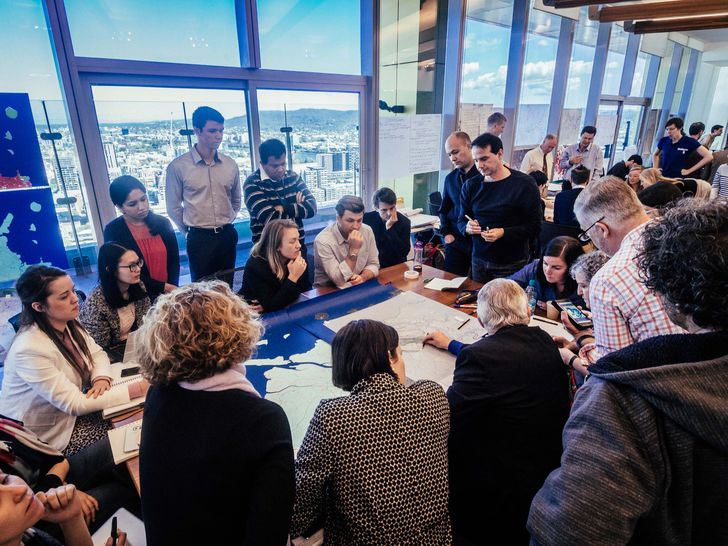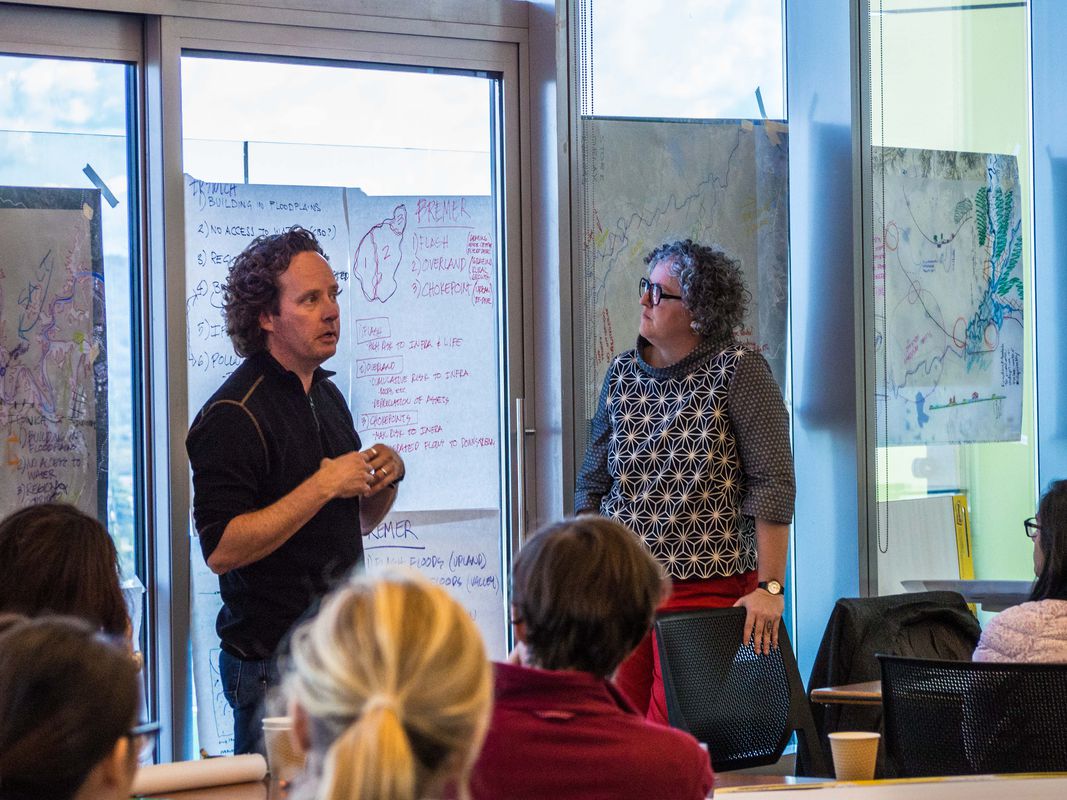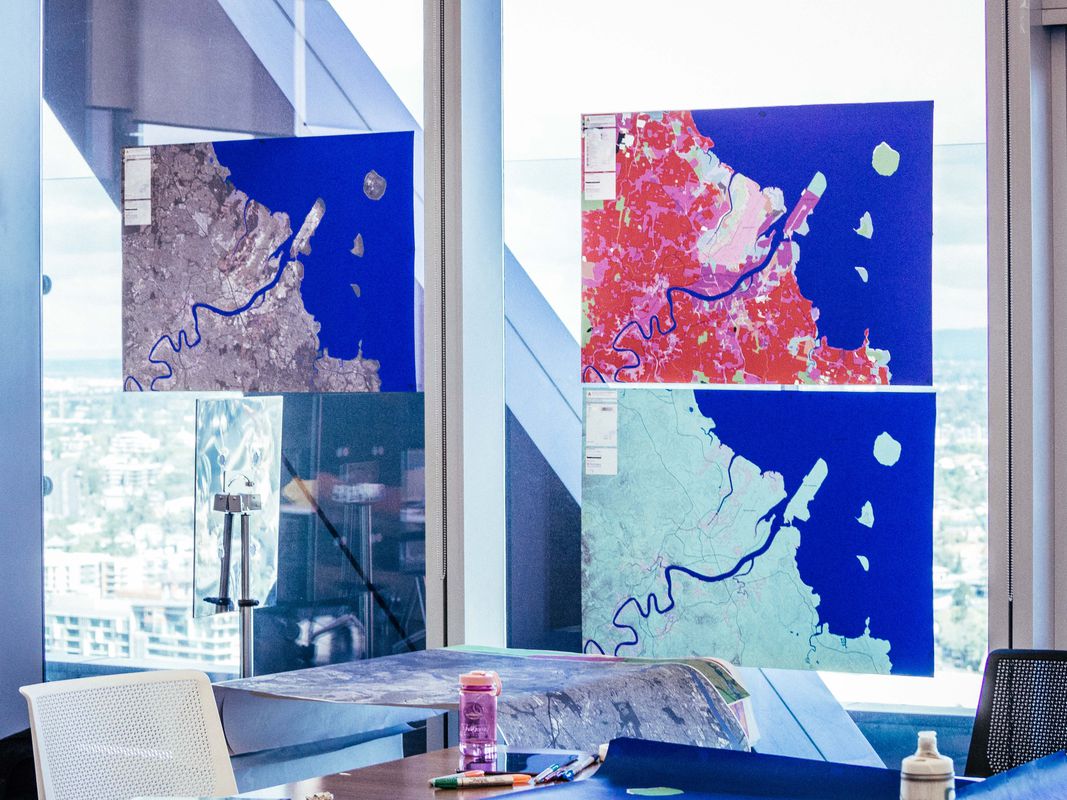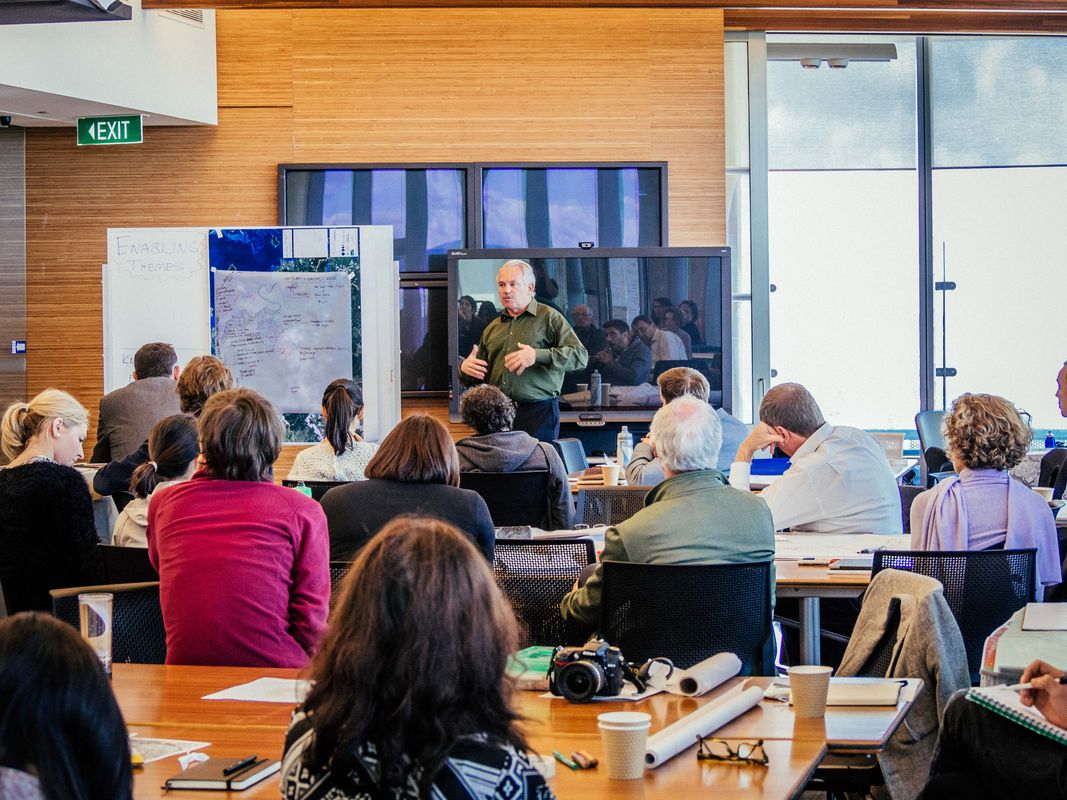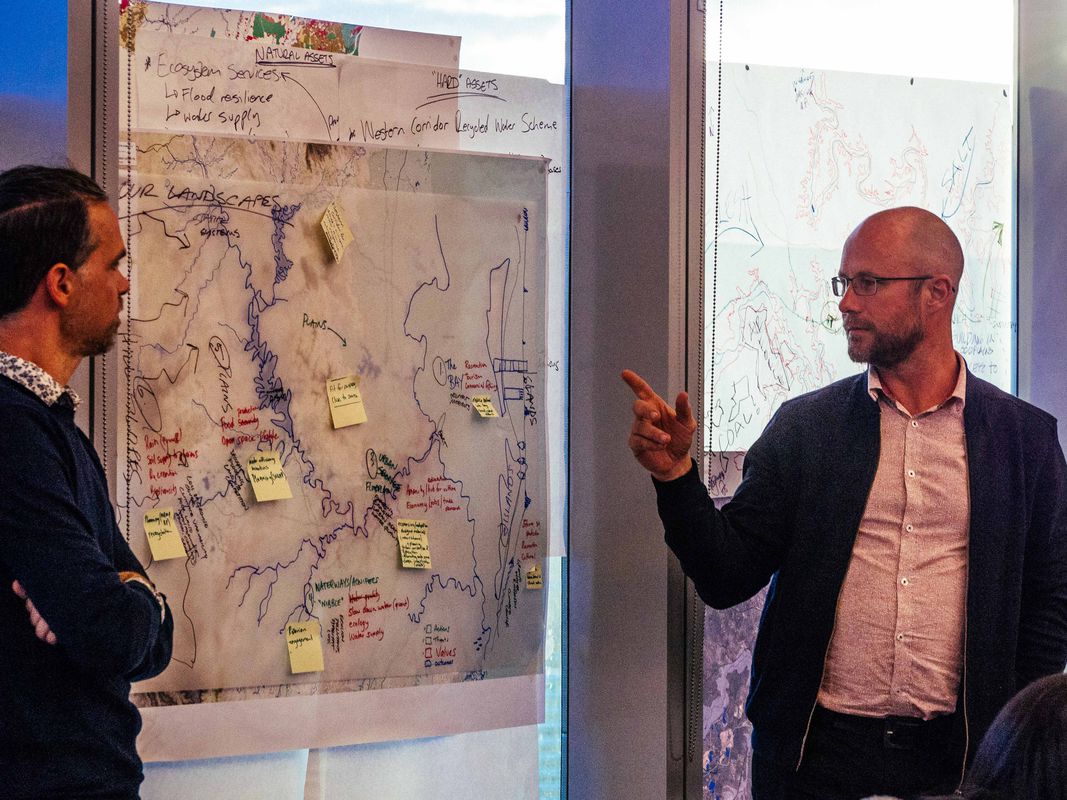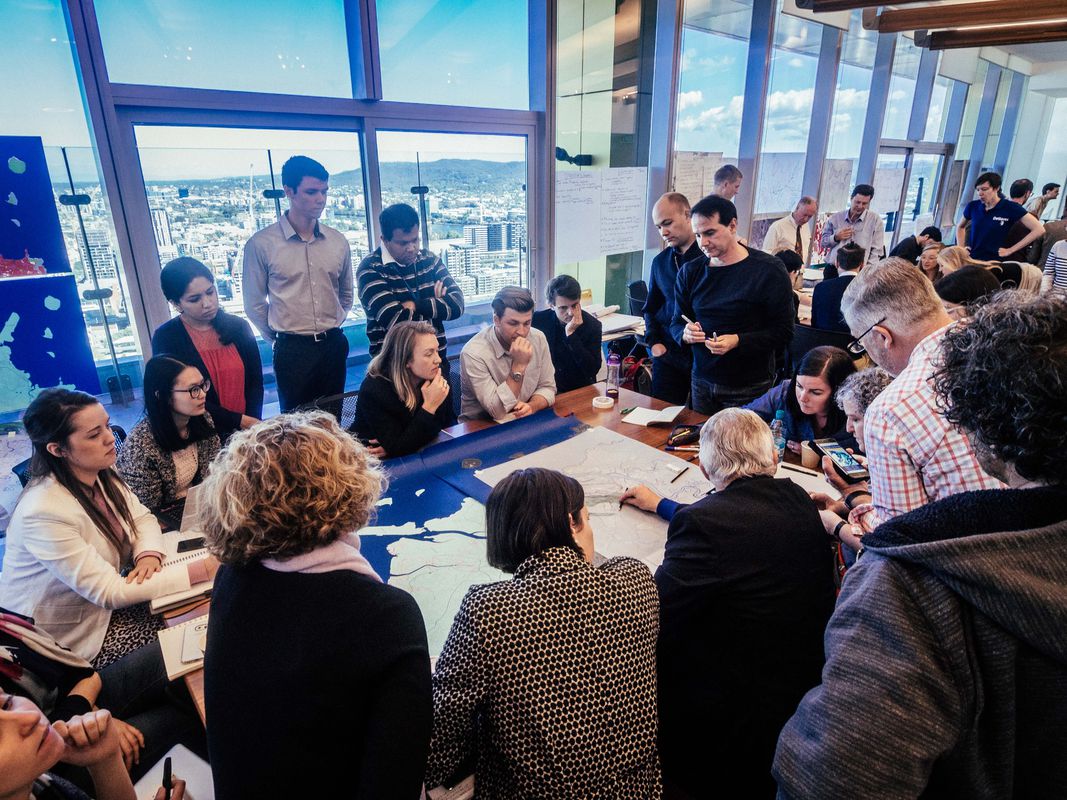James Davidson of JDA (James Davidson Architect) is an architect who has become well-known for his flood-resilient residential designs in Brisbane. After the devastation of the 2011 Brisbane floods, Davidson was confronted by roadblocks to architectural innovation in local government planning laws and building codes. Rather than working case by case, he began to advocate for a “whole of catchment” integrated water management plan to bring about better land use planning policy and resilient building practice in preparing for the city’s next severe flood event.
After winning one of the country’s most prestigious awards, the Winston Churchill Fellowship, Davidson investigated best practice flood resilient design principles for housing in a range of different contexts in the USA, The Netherlands and the United Kingdom. It was during this trip that Davidson came up with the vehicle for this higher level advocacy – SEQ Water Futures, a five-day design charrette that included a wide range of stakeholders, some familiar with the design process and others not so. All were committed to his central vision of better land use planning and resilient “sponge” urbanism in the Brisbane, Bremer and Lockyer river catchments. Along with JDA, this intensive design workshop was facilitated by professors John Hoal and Derek Hoeferlin, from the School of Design and Visual Arts, Washington University in St Louis (USA) and Tijs van Loon from Bosch-Slabbers Landscape Architects in The Netherlands. Members of the Queensland Reconstruction Authority, Flood Community of Practice, and the International Water Centre assisted in bringing together a multidisciplinary mix of 80 professionals from state and local government authorities, the insurance industry and allied professions. In addition to this mix, a group of architecture students from The University of Queensland joined the workshop teams and contributed exuberance and ideas to the mix of future possibilities. To push the thinking beyond the status quo, attendees were challenged with “disruptive thinking” to be bold in considering four scenarios: drought, flash flooding, a similar 2011 flood and a 2011 flood plus 30%.
SEQ Water Futures was a collaborative design workshop convened to generate ideas for better land use planning and resilient “sponge” urbanism in the Brisbane, Bremer and Lockyer river catchments.
Image: Courtesy James Davidson Architect
The design charrette demonstrated an alternative and highly successful approach to engaging key stakeholders within the Queensland Government on important strategic issues, such as incorporating greater resilience into our catchment planning and management in an era of climate change. A major outcome of the event was that it provided a clear vision for an integrated water management plan supported across sectors and professions. It advocated strongly for a closed loop approach in which all parts of the Brisbane catchment could rely on each other from the Scenic Rim to Moreton Bay. It proposed that those of us downstream support landowners in the upstream hinterland slopes to stabilize and revegetate erosion-prone areas and that there should be incentives to store runoff, delay water flows and recharge ground water in the sediment-rich Lockyer and Bremer Valley floodplains. In addition to the Lockyer Valley being critical in preventing sediment run-off into the Brisbane River and Moreton Bay, Ipswich was proposed as a critical transition zone with opportunities for eco-suburbia that would protect downstream suburbs as well. Finally, it was widely acknowledged that Brisbane and its flood-prone suburbs need to act as “urban sponges” capable of holding large quantities of water and sediment on localized sites before overflowing into the Brisbane River and subsequently Moreton Bay.
In terms of ongoing impacts, Davidson and his team have been encouraged to submit the charrette findings via the public submissions format for the SEQ Regional Plan, which is currently under revision. Moreover, the charrette has prompted further work on flood resilience in bridging the gulf between building codes, local planning schemes and the insurance sector.
Through their design studio, titled Creek Urbanism, the University of Queensland master of architecture students continued to build on their involvement in the charrette. The opportunity to rub shoulders with high-level professionals who work in government was seen by all involved as a valuable educational experience.
What then is the power of the “design process” and the “designing experience”? Using the visual language of drawing, skilled designers like Davidson, Hoal and Hoeferlin can unpack the challenges of policy change with key stakeholders. They can generate the will to overcome roadblocks through visualising innovative urban and landscape solutions. The design process can be regarded as a rigorous methodology for the iterative testing of ideas and their outcomes. The designing experience, in fact, opens up the complexity of wicked problems to greater transparency and accessibility across professional boundaries, whereby true design thinking becomes a key tool in advocating a better future for all.


